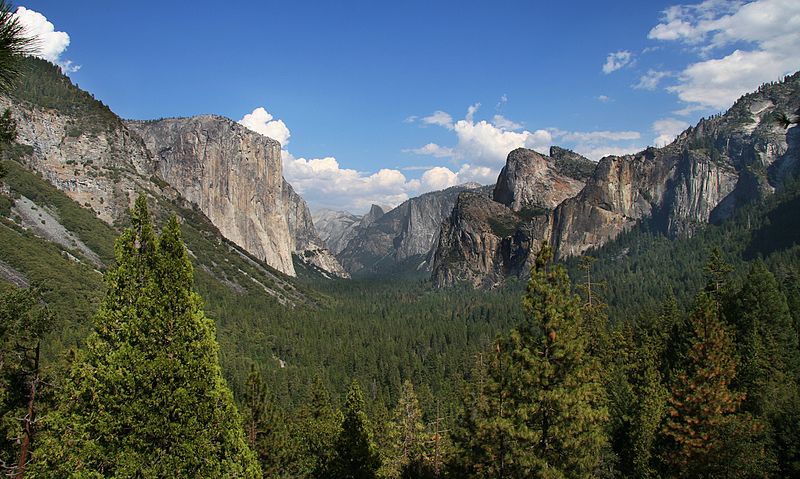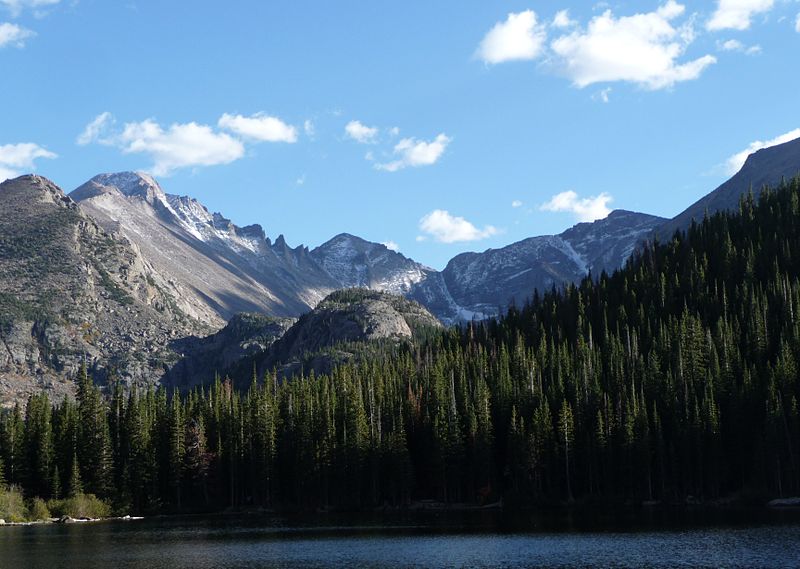25. Yosemite National Park – 3.8 million visitors. Yosemite was established as a national park in 1890 – making it the third oldest national park after Yellowstone and Sequoia. Located in the state of California, Yosemite is also a UNESCO heritage site, and contains beautiful cliffs, waterfalls (Yosemite Falls are North America’s tallest waterfall), three Giant Sequoia groves and diverse wildlife
Tuesday, June 30, 2015
Great Smoky Mountains National Park
24. Great Smoky Mountains National Park - 9 million visitors. With more than 9 million visitors per year, the Great Smoky Mountains national park is the most visited national park in the united states by far, and one of the most popular attractions in the US in general. The park is located in the states of Tennessee and North Carolina and was established in 1934. This UNESCO world heritage site is home to over than 400 vertebrate species, 100 tree species, and 5000 plant species. The main attraction of the park is hiking, offering over 800 miles (1,300 km) of trails
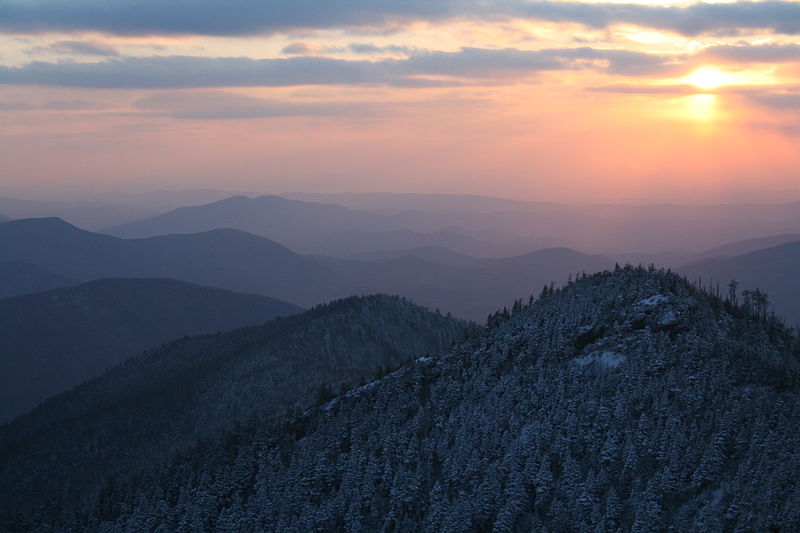

Rocky Mountain National Park – 3.2 million visitors
23. Rocky Mountain National Park – 3.2 million visitors. Established in 1915, this wonderful national park is located in the state of Colorado. The park contains a section of the Rocky Mountains that contains many lakes and forests that are inhabited by lots of wildlife including mule deer, bighorn sheep, black bears, and cougars
Monday, June 29, 2015
Brooklyn Botanic Garden, New York, United States
22. Brooklyn Botanic Garden, New York, United States - This 52-acre (21 ha) garden was founded in 1910, and today has over 900,000 visitors each year. The garden includes a number of specialty inner gardens, plant collections, the Steinhardt Conservatory,3 climate-themed plant pavilions, an art gallery and more
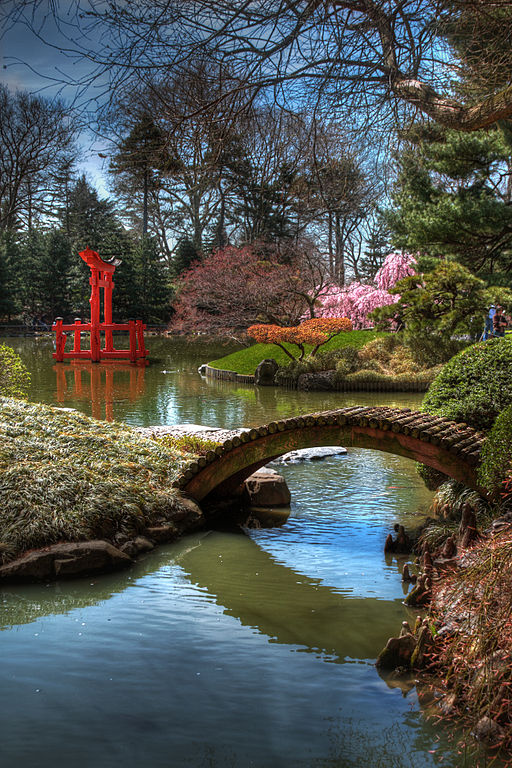

Jardim Botânico, Rio de Janeiro, Brazil
21. Jardim Botânico, Rio de Janeiro, Brazil – Located at the Jardim Botânico district, the gardens are home to around 6,500 species. The gardens were founded in 1808 and opened to the public in 1822. The 140-hectare park lies at the foot of the Corcovado Mountain, far below the statue of Christ the Redeemer
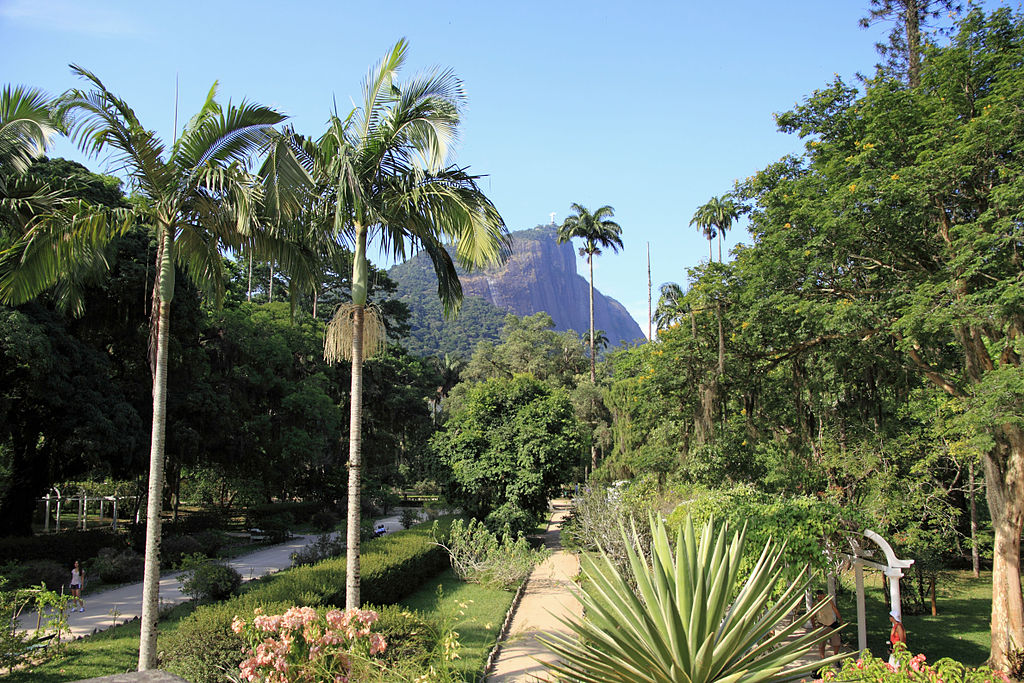
Monteverde Cloud Forest Reserve, Costa Rica
20. Monteverde Cloud Forest Reserve, Costa Rica – A forest reserve named after the nearby town of Monteverde.The reserve consists of over 10,500 hectares (26,000 acres) of tropical rainforest and visited by roughly 70,000 visitors a year. The Reserve consists of 6 ecological zones, 90% of which are virgin forest. The reserve has an extremely high biodiversity, consisting of over 2,500 plant species (including the most orchid species in a single place), 100 species of mammals, 400 bird species, 120 reptilian and amphibian species, and thousands of insects
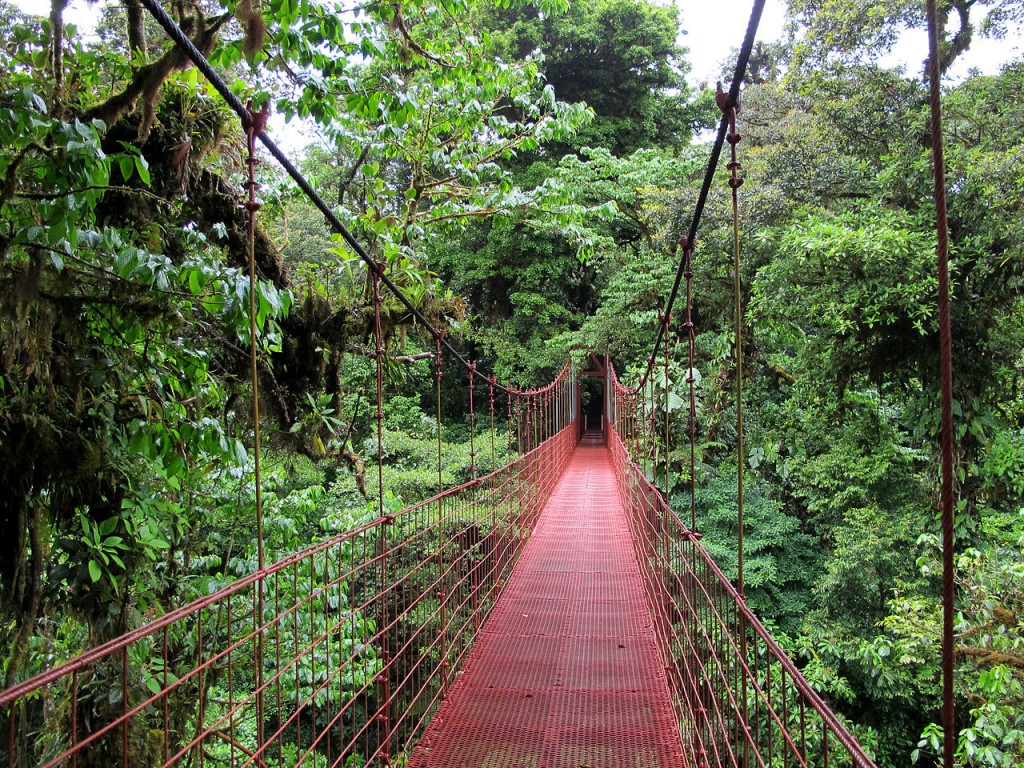
Jiuzhaigou Valley, Sichuan, China
19. Jiuzhaigou Valley, Sichuan, China- The “Valley of Nine Villages” is known for its many multi-level waterfalls, colorful lakes, and snow-capped peaks. Its elevation ranges from 2,000 to 4,500 metres (6,600 to 14,800 ft). It’s an UNESCO World Heritage Site since 1992 and a World Biosphere Reserve since 1997
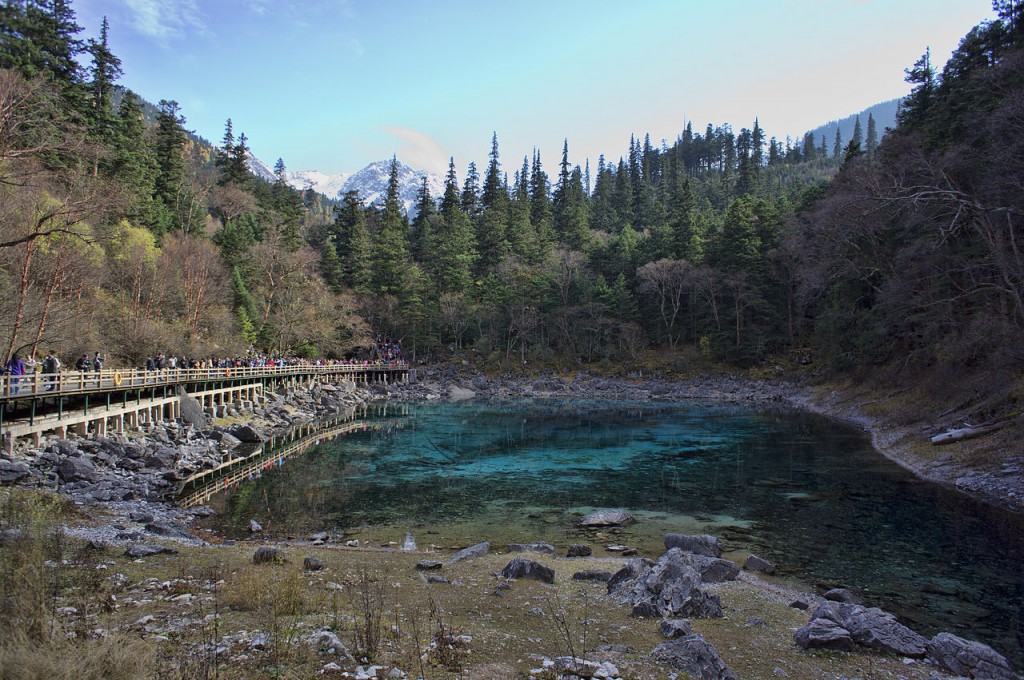
Redwood National Park, California, United States
18. Redwood National Park, California, United States – Also in California, The Redwood National parks is a combination of four parks that together protect 45% of all remaining coast redwood (Sequoia sempervirens) old-growth forests, totaling at least 158 square km. These trees are the tallest and one of the most massive tree species on Earth
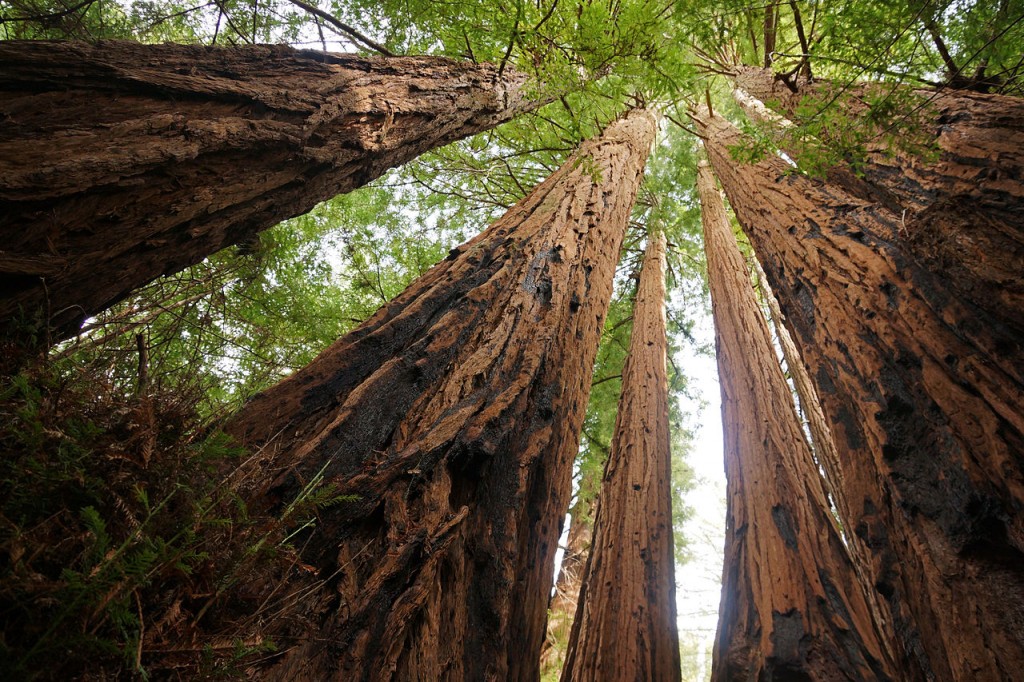

Giant Sequoia National Monument, California, United States
17. Giant Sequoia National Monument, California, United States - Located in the southern Sierra Nevada mountains of California. The forest is named for the majestic Giant Sequoia trees which populate 38 distinct groves within the boundaries of the forest. The Sequoia National Forest covers 4,829 sq km (1,865 sq mi)
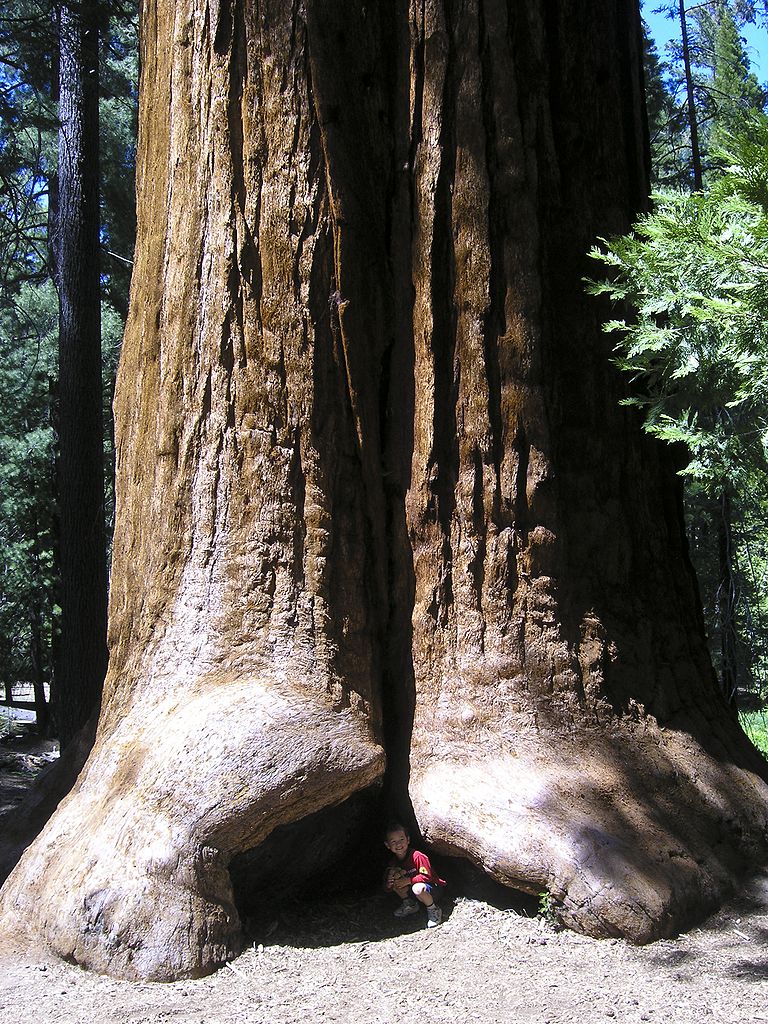
Sagano Bamboo Forest, Japan
16. Sagano Bamboo Forest, Japan – A magnificent Bamboo forest in the district of Arashiyama, west to Kyoto, Japan
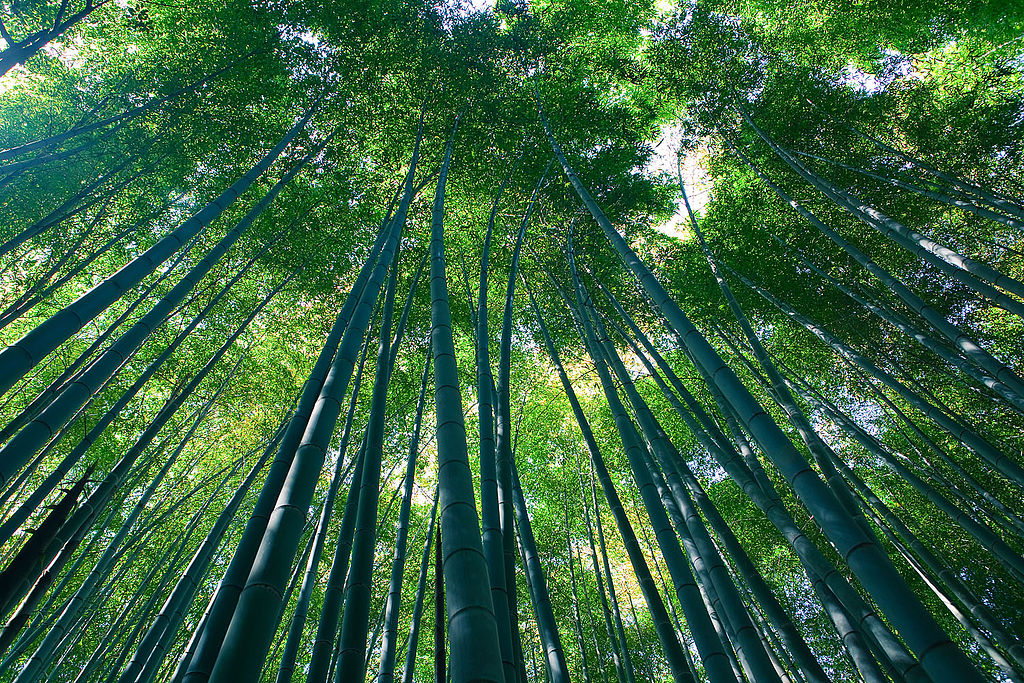
Friday, June 26, 2015
Wild plants as Non Wood Forest Products used by the rural community of Dagana, a southern foothill district of Bhutan
15.SAARC Forestry Journal Wild plants and edible fungi are the potential resource of the Non Wood Forest Products (NWFP) that provides rural poor people with food and cash during the lean agricultural farming season leading to ensure the food security. Bhutan stands at one of the fragile mountain ecosystems of the world which need much attention to the conservation of ecosphere for maintaining its biodiversity. People residing in High Mountain or in the foothills of Bhutan have immense knowledge and skill on ethno-plants resources. Hence, the wild plant survey was conducted to reveal the traditional knowledge and documentation of available NWFP species that are locally used by the remote community people of Dagana district. The 14 block administration that includes all in the district was accounted to conduct field survey. The survey tools included direct observation, semi-structured interviews, individual discussions, key informant interviews, focus group discussions, questionnaires, and participatory rural appraisal.
It was found that 241 species of NWFP are used by the local community. Some species does have potential for commercialization and it is being observed that low income group of the people benefitted monetarily the most. The NWFP farmer groups in Dagana have been getting good monetary advantage from the sale of matured spikes of Piper longum L. and Piper peepuloides Roxb. and the leaves of Cinnamomum tamala(Hamilton) Nees & Ebermaier.
Dagana has diverse NWFP species that provide subsistence livelihood to economically disadvantaged group of people. However, it was revealed that because of rural-urban migration, the transferring of indigenous knowledge from elderly people to younger generation is in the stage of oblivion. The flow of indigenous knowledge from generation to generation is at stake thus, it is very much necessary to have documentation of such knowledge before it gets depleted.
The Indian Forest
The Indian Forests Book a forest tour

India possesses a distinct identity, not only because of its geography, history and culture but also because of the great diversity of its natural ecosystems. The panorama of Indian forest ranges from evergreen tropical rain forests in the Andaman and Nicobar Islands, the Western Ghats, and the north-eastern states, to dry alpine scrub high in the Himalaya to the north. Between the two extremes, the country has semi-evergreen rain forests, deciduous monsoon forests, thorn forests, subtropical pine forests in the lower montane zone and temperate montane forests (Lal, 1989).
Book a Forest Tour
Report on Forest of IndiaAs per the latest state of forests report of the Forest Survey of India the actual forest cover of India is 19.27% of the geographic area, corresponding to 63.3 million ha. Only 38 million ha of forests in India are well stocked (crown density above 40%). This resource has to meet the demand of a population of 950 million people and around 450 million cattle. As such, country has to meet the needs of 16% of the world's population from 1% of the world forest resources. The same forest of India has also to cater for the 19% of the world cattle population.
The History of Indian Forest Reserves
In Mumbai (Bombay), the conservator of forest, Gibson, tried to introduce rules prohibiting shifting cultivation and plantation of teak forests. From 1865 to 1894, forest reserves were established to secure material for imperial needs. From the 18th century, scientific forest management systems were employed to regenerate and harvest the forest to make it sustainable. Between 1926 and 1947 afforestation was carried out on a large scale in the Punjab and Uttar Pradesh. In the early 1930s, people began showing interest in the conservation of wild life.
Around the same time the Indian rulers of the States also started conservation of habitats to help conserve the birds and mammals in forest of India. Though all of them were hunters and between them and the British they cleaned at least 5000 tigers from the forests of India. But still these areas of conservation helped save the species from extinction and formed most of the modern National Parks in India.

The new Forest Policy of 1952 recognised the protective functions of the forest of India and aimed at maintaining one-third of India's land area under forest. Certain activities were banned and grazing restricted to protect forest of India. Much of the original British policy was kept in place, such as the classification of forest land into two broad types.
The next 50 years saw development and change in people's thinking regarding the forest. A constructive attitude was brought about through a number of five-year plans. Until 1976, the forest resource was seen as a source of earning money for the state and therefore little was spent in protecting Indian forests or looking after it.
Types of Forests in India
In it 16 major forests types are recognised, subdivided into 221 minor types. Structure, physiognomy and floristics are all used as characters to define the types of Indian forest.
Book a Forest Tour
The main areas of tropical forest of India are found in the Andaman and Nicobar Islands; the Western Ghats, which fringe the Arabian Sea coastline of peninsular India; and the greater Assam region in the north-east. Small remnants of rain forest of India are found in Orissa state. Semi-evergreen rain forest is more extensive than the evergreen formation partly because evergreen forests tend to degrade to semi-evergreen with human interference. There are substantial differences in both the flora and fauna between the three major rain forest regions (IUCN, 1986; Rodges and Panwar, 1988). The Western Ghats Monsoon forests in India occur both on the western (coastal) margins of the ghats and on the eastern side where there is less rainfall. Forests in India contain several tree species of great commercial significance (e.g. Indian rosewood Dalbergia latifolia, Malabar Kino Pterocarpus marsupium, teak and Terminalia crenulata), but they have now been cleared from many areas. In the rain forest of India there is an enormous number of tree species. At least 60 percent of the trees of the upper canopy are of species which individually contribute not more than one percent of the total number. Clumps of bamboo occur along streams or in poorly drained hollows throughout the evergreen and semi-evergreen forests of south-west India, probably in areas once cleared for shifting agriculture.

The tropical vegetation of north-east India (which includes the states of Assam, Nagaland, Manipur, Mizoram, Tripura and Meghalaya as well as the plain regions of Arunachal Pradesh) typically occurs at elevations up to 900 m. It embraces evergreen and semi-evergreen rain forests, moist deciduous monsoon forests, riparian forests, swamps and grasslands. Evergreen rain forests in India are found in the Assam Valley, the foothills of the eastern Himalayas and the lower parts of the Naga Hills, Meghalaya, Mizoram, and Manipur where the rain fall exceeds 2300 mm per annum. In the Assam Valley the giant Dipterocarpus macrocarpus and Shorea assamica occur singly, occasionally attaining a girth of up to 7 m and a height of up to 50 m. The monsoon forests in India are mainly moist sal Shorea robusta forests, which occur widely in this region (IUCN, 1991).
The Andamans and Nicobar islands have tropical evergreen rain forests and tropical semi-evergreen rainforests as well as tropical monsoon moist monsoon forests (IUCN, 1986). The dominant species these Indian forest is Dipterocarpus grandiflorus in hilly areas, while Dipterocarpus kerrii is dominant on some islands in the southern parts of the archipelago. The monsoon forests of the Andamans are dominated by Pterocarpus dalbergioides and Terminalia spp.
Appalachian Hemlock Forests
13. Appalachian Hemlock Forests
Several states are home to the Appalachian Hemlock, which is threatened by the woolly adelgid. This forest is in New Hampshire.
In North America, a range of factors threatens the 155 national forests, with at least a dozen being critically endangered (some experts consider the number to be closer to 30). Forests are at risk due to the following factors: pestilence, invading species, human activity and climate change. Human activities such as mining, logging, air and groundwater pollution, noise pollution, deforestation, clear-cutting, the “island effect” and other poor silviculture methods have the greatest impact. (The “island effect” involves breaking up forests into smaller sections, as in the case of Sherwood Forest.)

Black Forest, Germany
12. Black Forest, Germany – Schwarzwald or “Black Forest” is a wooded mountain range in Baden-Württemberg, southwestern Germany. It is bordered by the Rhine valley to the west and south. The name “Black Forest” was given by the Romans who referred to the forest blocking out most of the sunlight from getting inside the forest by the dense growth of conifers
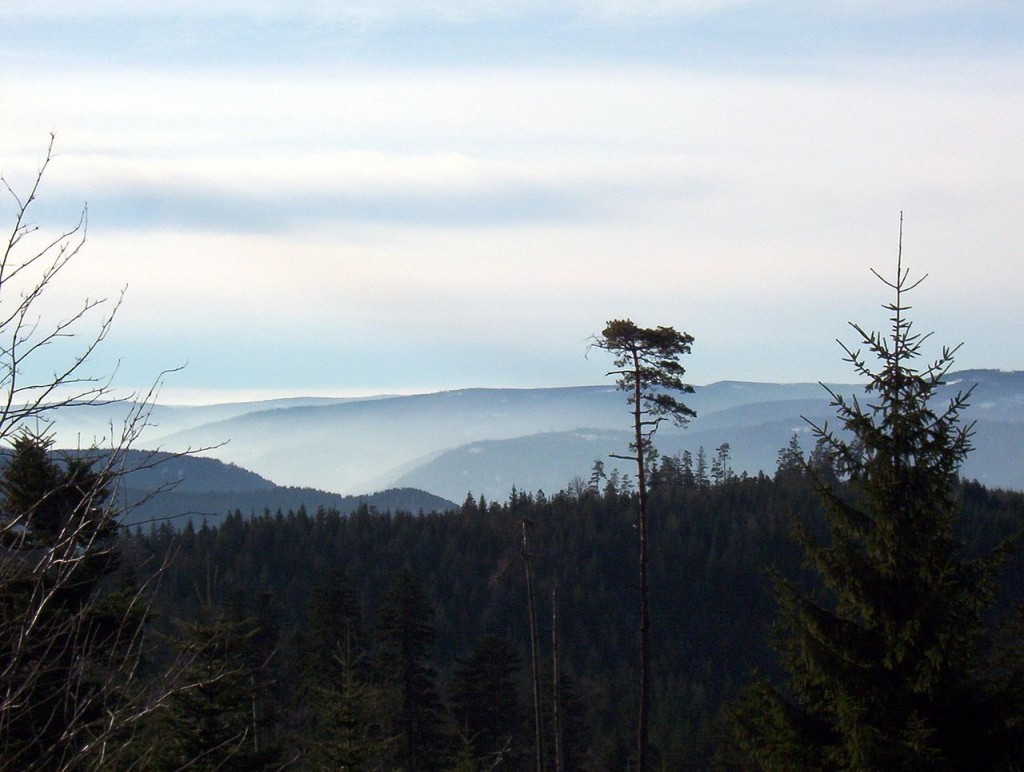
Crooked Forest, Poland
11. Crooked Forest, Poland – A grove of oddly-shaped pine trees. This young forest was planted around 1930 and has about 400 pines. It is generally believed that some form of human tool or technique was used to make the trees grow this way, but the method and motive are not currently known. Some believe that the woods were deliberately grown this way to make “Compass Timbers”, or trees that are deliberately shaped for the purpose of using those odd shapes in ship building. Another theory is that tanks from WWII are the cause, rolling over the young trees snapping the stem, but still surviving, forcing them to grow in the direction they were ran over
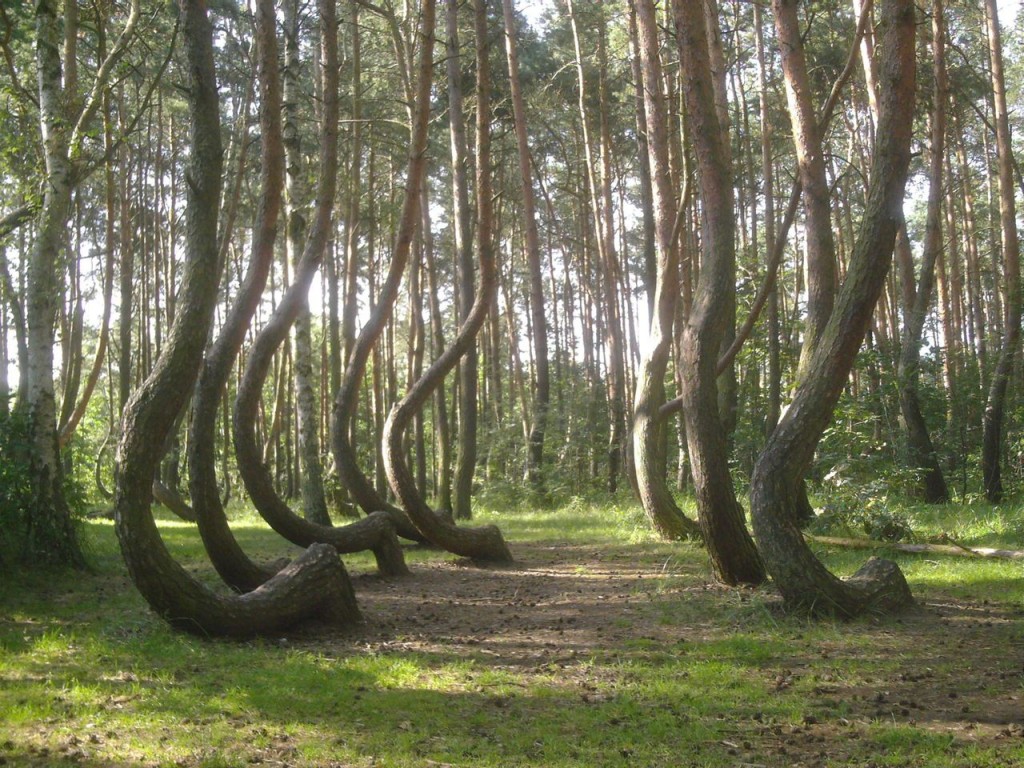
Amazon Rainforest, South America
10. Amazon Rainforest, South America – A moist broadleaf rainforest that covers 5,500,000 square km (2,100,000 sq mi). This region is located within 9 nations: 60% of the area is in Brazil, and the rest is in Peru, Colombia, Venezuela, Ecuador, Bolivia, Guyana, Suriname and French Guiana. The Amazon represents over half of the planet’s remaining rainforests, and it comprises the largest and most species-rich tract of tropical rainforest in the world
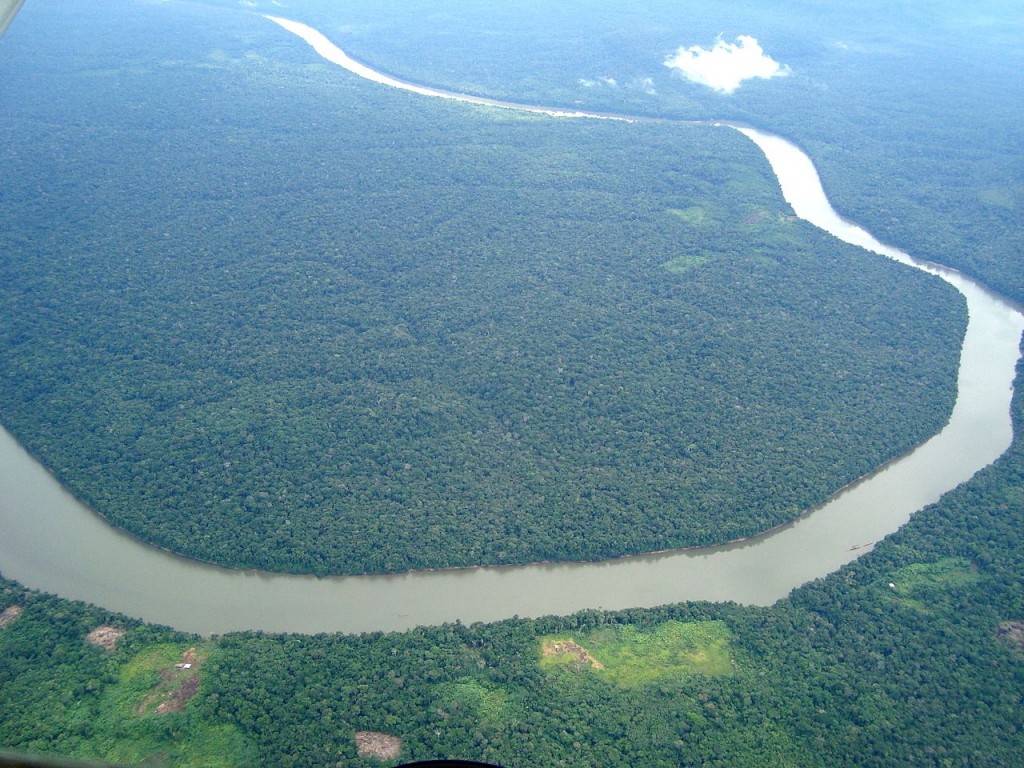
Olympic National Forest, Washington, United States
9. Olympic National Forest, Washington, United States – Inside the Olympic National Park, located the Olympic National Forest. It’s a temperate rainforest and one of the largest, if not the largest, temperate rainforests in the world. It is also the wettest place in the continental United States
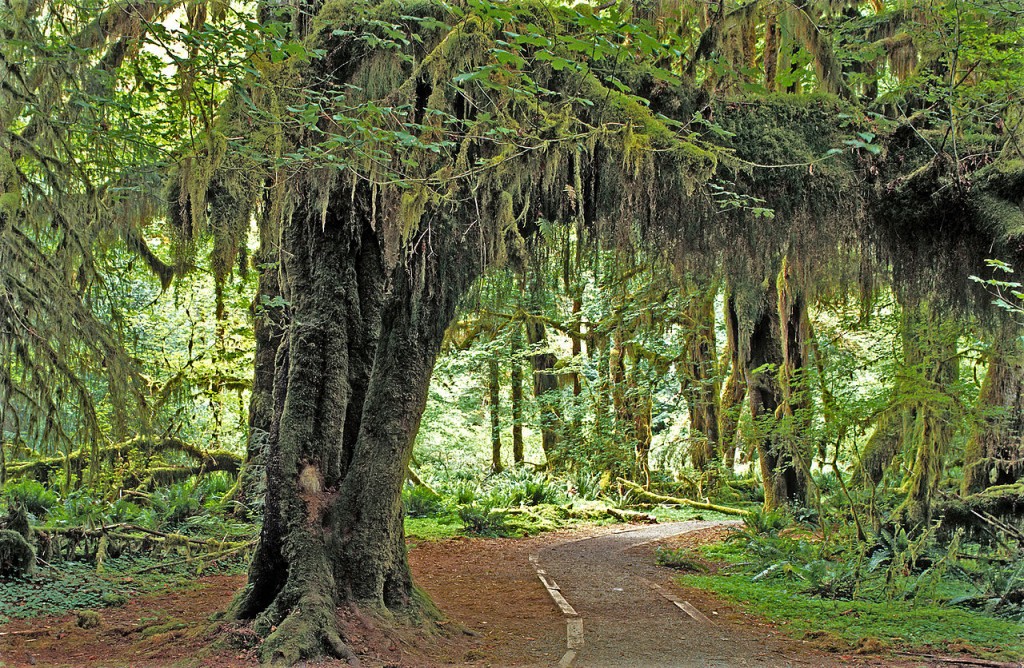
Thursday, June 25, 2015
Pembrey Woods
8- Pembrey Woods
Carmarthenshire, Wales, UK

Human activities in Pembrey Woods dates back to at least 400 B.C. when a fort was established there. The area is better known for what the locals call the "little hatchet men of Pembrey" who would lure ships with their lanterns close to a coast line that was filled with dangerous rocks, ultimately wrecking the ships. The little hatchet men would then slauther the survivors and rob everything they could. From the 19th century, gun powder and dynamite was produced in the forest. Close by, was a RAF air field and during the second world war, many damaged planes crashed in the area trying to make it home. Many ghosts are seen roaming in the forest as well as on the shores, from the little hatchet men to the ghost of a second world war air man, people have also seen ghost ships with dead sailors onboard. The Most Haunted show did an investigation there and here's a post from a message board thread where people are describing what was seen on the show as well as sharing a few personal stories. "Went camping in them woods with some friends last year,and I must say omg,I have mediumship but not trained,call it a gift,anyway we set up camp in the woods and made a fire,when night fell I had this strange feeling of we wasn't alone there and it was far from suggestive thinking!anyway I could see shadows moving across the trees and so did the rest of my friends,I also sensed a cavalier type man greeting me at the fire,now the funny thing is I told one of my friends this who was with us and she turned around and said omg I just saw the outline of a man standing by a tree looking over and he had the outline of a cavalier type person,she told me this after I had told her,we also saw strange lights in the distance inside the woods from our camp site,also got mouning in my ear not very nice let me tell you and the last thing I would like to add is when one of my friends went walking around the woods at night he said that it felt like some had gripped the bottom of his leg,hence the reason why he went flying to the ground!! all in all a very nice place to visit but also very creepy and you just know there's something there !!!"
Epping Forest
6- Epping Forest
Essex, England, UK
Epping Forest is also notorious for its link with crime. The famous highwayman Dick Turpin had a hideout there, he lived for many years in a cave at High Beach. He and his partner Tom King would rob most people who would pass by. The Most Haunted show did an investigation in Epping Forest looking for the spirit of Dick Turpin and apparently they found him there. Because of its proximity to the city of London, the forest is also a notorious burial area for murder victims. Another reason why this forest is notorious is because of its ghost stories. People have reported apparitions, lights and there's even a spot called the Hangman’s Hill at High Beach where some claims that when put in neutral, your car is going to be pulled uphill.▼Most of the history of the forest may have been lost with time. However, there is still evidence of “Iron Age” forts; stories of Iceni Warriors; Roman battles; Saxon saints; Norman invaders; Tudor hunting grounds; notorious highwaymen; a place to escape war and plague, and a retreat for famous artists and writers.
Legend has it that if you park on the hill the car will roll up it instead of down as you reach the top and look straight ahead you will see a bare field with just a tree in it which is apparently where a man was hung, supposedly you are being pulled up the hill by the hangman.
Screaming Woods
6- Screaming Woods
Pluckley, Kent, UK

Dering Woods a.k.a. Screaming Woods sit just south of what is said to be the most haunted village in Britain, Pluckley. The woods get their name because of the blood curdling screams people sometimes hear coming from the forest late at night. Described as the most haunted woodland in Kent, Screaming Woods is said to be haunted by a highwayman who was captured by villagers, brought to the woods, pinned to a tree and killed with a sword, and a screaming man who is said to have fallen to his death. Here's a post from an interesting message board thread where people are discussing Screaming Woods and sharing experiences. I was in pluckley and a group of friends and i deicided to go to deering woods (screaming woods) when we got there ther were birds singing and the atmosphear seemed quite happy we pulled up the other car in the car park left we got out the car and my friend noticed that the birds had stopped singing as we went into the woods you could have heard a pin drop we walked in up to half way towards the cross roads and us girls decided to come out so we went in to the car and the boys went bac in about 20 min later the boys came running out they got in the car started the car and turned it head on to the woods were my friends brand new car stalled head on and we saw this dark black mist coming towards us as if it was walking down the path (there was definatly something) we then went down to the black horse pub were we discussed the days ghost hunt a we always did and the boys said that it was only when they started getting close to the crossroads that it apperead so they ran out. we have talked to a few of the local people who have said that early in the morning you can here screaming coming from the woods.
Kinabalu National Park
5. Kinabalu National Park

Kinabalu National Park is one of the first national parks in Malaysia and was established in 1964. It surrounds Borneo’s highest and world’s youngest non-volcanic mountain Mount Kinabalu covering an area of 754 square kilometres. It is diverse in plant and animal species and many of those are endemic. It was also declared a World Heritage Site in 2000 by UNESCO and is home to 4500 species of flora and fauna, including 326 bird and around 100 mammal species.
Congo Rain Forest
4. Congo Rain Forest
The Congo forest got its name from the river flowing in it called the Congo River which is one of the longest rivers in the world and both of these were the subject of Joseph Conrad’s famous book The Heart of Darkness. Almost 70 percent of the plant cover in the African subcontinent is represented by the Congo. It is covering a vast area of Central Africa through Cameroon, Equatorial Guinea, Gabon, the Central African Republic, the Democratic Republic of Congo and the Republic of Congo. It is becoming an increasingly fragile ecosystem day by day because of the deforestation, commercial logging, and clearing off forests for agricultural purposes. Hunting and poaching of the animals for their meat called bush meat has rendered many species endangered. A widespread population and increasing poverty has only helped in the expansion of the bush meat trade. The Congo rain forest is the only known habitat of the pygmy chimpanzee. Other animals living in the Congo Basin are the hippopotamus, okapi, gorillas, African elephants, etc. Most population of the Democratic Republic of Congo depend on this forest for its needs of food, medicine and shelter.
Taiga
2. Taiga

Taiga, also called the Boreal Forests is considered to be the world’s largest land biome consisting of coniferous forests. The Taiga forest consists of almost one-third of all the trees in the world. This forest has the biggest impact on the carbon dioxide levels and is locate just below the tundra line and receives sunlight only for a month in a year thus it takes almost more than 50 years for the seeds to grow into just a sapling’s size. It forms 29 percent of the world’s forest cover. The soil in the Taiga forest is poor in nutrients and acidic. These forests are dominated by larch, spruce, fir and pine trees mostly along with some broadleaf trees like birch, willow, aspen, etc. These are also home for a large range of animals including Alaska Blackfish, moose, reindeer, Canada lynx, Siberian tiger, etc. Clear cutting and forest fires have posed a threat on this forest’s existence and survival.
Daintree Rainforest, Australia
2. Daintree Rainforest, Australia – A tropical rainforest on the north east coast of Queensland, Australia. It is probably the oldest tropical rainforest on the planet, having existed continuously for the past 110 million years. This rainforest has a wide range of animals including kangaroos, wallabies and platypuses
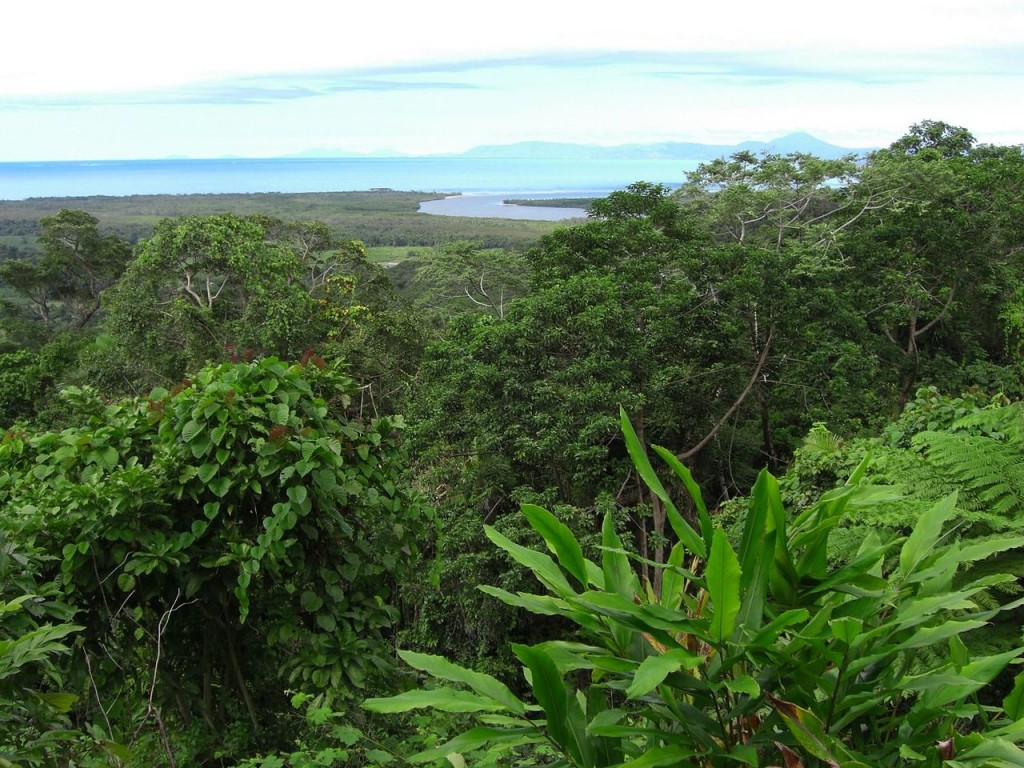
Wednesday, June 24, 2015
Sinharaja Forest Reserve
 Sinharaja Forest Reserve is a national park and a biodiversity hotspot in Sri Lanka. It is of international significance and has been designated a Biosphere Reserve and World Heritage Site by UNESCO.
Sinharaja Forest Reserve is a national park and a biodiversity hotspot in Sri Lanka. It is of international significance and has been designated a Biosphere Reserve and World Heritage Site by UNESCO.
The hilly virgin rainforest, part of the Sri Lanka lowland rain forests ecoregion, was saved from the worst of commercial logging by its inaccessibility, and was designated a World Biosphere Reserve in 1978 and a World Heritage Site in 1988. The reserve's name translates as Lion Kingdom.
The reserve is only 21 km (13 mi) from east to west, and a maximum of 7 km (4.3 mi) from north to south, but it is a treasure trove of endemic species, including trees, insects, amphibians, reptiles, birds and mammals.
Because of the dense vegetation, wildlife is not as easily seen as at dry-zone national parks such as Yala. There are about 3elephants and the 15 or so leopards are rarely seen. The most common larger mammal is the endemic purple-faced langur.
An interesting phenomenon is that birds tend to move in mixed feeding flocks, invariably led by the fearless greater racket-tailed drongo and the noisy orange-billed babbler. Of Sri Lanka's 26 endemic birds, the 20 rainforest species all occur here, including the elusive red-faced malkoha, green-billed coucal and Sri Lanka blue magpie.
Reptiles include the endemic green pit viper and hump-nosed vipers, and there are a large variety of amphibians, especially tree frogs. Invertebrates include the endemic common birdwing butterfly and the inevitable leeches.
Subscribe to:
Posts (Atom)
